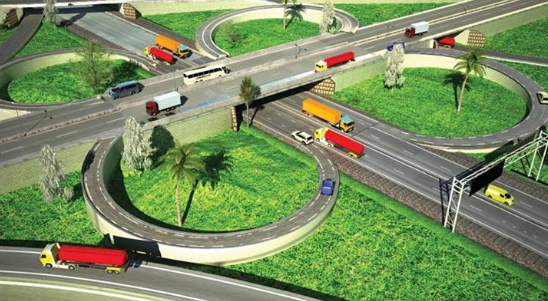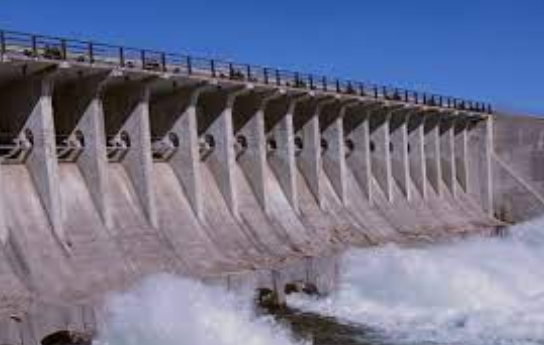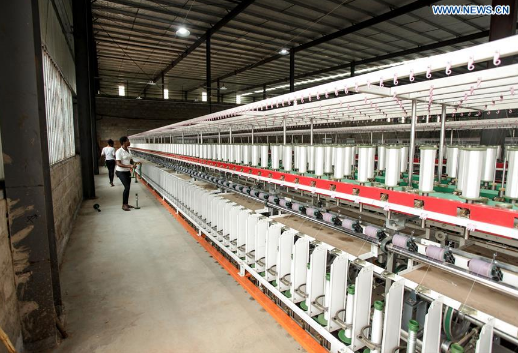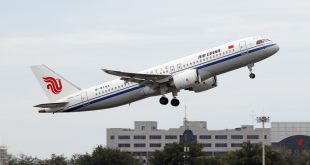Published: July 11,2023
By Mubarak Mugabo

Chinese projects have created more than 50,000 jobs for Ugandans which has helped the people to increase their incomes, fight poverty and live a better life. The Chinese projects generally contribute towards Uganda’s prosperity. China’s projects like the Belt and Road Initiative (BRI) despite intense negative backlash in developing countries, it remains popular in Africa and doing wonders in Uganda. There are many BRI projects in Uganda including roads, hydro power, industrial parks, agricultural and medical exchanges and other sectors.
For the last few years, I have interacted with researchers, government officials of these projects on a number of occasions to evaluate the benefits and shortcomings of BRI; their positive contribution outweighs the negative.
This explains why China surpassed United States in the eyes of young Africans regarding positive influence according to a survey conducted by Ichikowitz Family Foundation last year.
The Kampala-Entebbe Expressway;
Last week; I traveled to Entebbe international airport from Kampala, the capital of Uganda, a distance of about 36 kilometers. For those familiar with the route, it used to take us more than four hours to drive that distance.
It would cost Uganda shillings 4000, about $1.4 for each passenger in a 14-seater commuter taxi. This is because the main road has got more traffic to many Kampala and Wakiso city suburbs.
In 2012, government designated the route for the construction of the Kampala-Entebbe Expressway, with funding from Exim Bank of China. The project was commissioned in 2018.
The four lane expressway now cuts the travel time to about 25minutes at the same cost but enabling travelers to the airport and the neighboring residential area reduce time. Many passengers are now happy with this time saving and safe project.
Although it costs Uganda Shillings 5000 (about $1.7) for light vehicles to use the route, the scost and time saved is worth it. Besides saving time and money for Ugandans, the four lane expressway is the best and one of its kind in Uganda today.
Ugandans used to boast about the old Entebbe-Kampala Road, Kampala-Mubende-Fort portal road and Kampala-Karuma-Gulu highway as the one of the best roads in the country.
Karuma Hydropower Project;

Karuma is in Kiryandongo district where Uganda’s biggest hydroelectric power project is yet to be commissioned. Uganda acquired a $1.4billion loan again from Exim Bank of China to construct this 600 megawatts hydroelectric power project. The project is located on the River Nile, in Kiryandongo district.
The six turbine mega project recently tested one of the turbines and today is contributing up to 100 megawatts to the national grid. According to Uganda’s ministry of Energy and Mineral resources, Uganda’s electricity generation capacity is 1,360 megawatts, Karuma hydro power station will increase the capacity to 2,000 megawatts upon commissioning any time soon this year.
On my way from Kingfisher Oil field in Kikuube district, also operated by China’s oil giant China National Offshore Oil Company (CNOOC), I toured Karuma hydro power station to check on the progress, I observed that local communities have immensely benefitted from the project ranging from market for agricultural products, services, jobs and skills.
Okema Julius, 27 years old joined Karuma project in 2015 as a construction porter, he had no skill that can warrant him employment anywhere, today he can operate construction equipment, drive heavy-load vehicles and draw plans. He has since married, built his own house and taken his children to school. Over 3000 unskilled Ugandans have been employed in the construction Karuma hydro power station.
The expressway and Karuma projects are part of the BRI projects in Uganda intended to reduce the cost of doing business, allowing those able to start small factories and small medium size enterprises which can provide jobs for unemployed youths.
According to United Nations Children’s fund (UNICEF), Uganda has the second youngest populations in the world with 78 percent under the ages of 35 years. The 2022 Uganda Bureau of Statistics report shows that about 10 million Ugandan youths are neither in education, employment or training.
The few ones who are able to work as causal workers in projects like Karuma hydropower project have got opportunities in small factories established in the various parts of the country.
Chinese-established Industrial Parks;

Liao Shen industrial park is located in Kapeeka village, Nakaseke district in central Uganda, about 60 kilometers from Kampala. Established in 2015, it occupies a 259-hectare piece of land.
The 2021 Frederich Ebert Stiftung study revealed that 14 operational firms and two others under construction within Liao Shen industrial park.
According to the ministry of finance, 50000 jobs have already been created by four industrial parks, of which almost 20,000 jobs are created in Liao Shen industrial park. Also about 350 operational firms are constructed in industrial parks all together.
Other than contributing to value addition of our products, buying maize, mangoes and other fruits from local farmers, The Park employs hundreds of young people from the countryside.
Those employed, apart from getting the jobs and improving lives, young people leave parks much more skilled than they came and becoming more employable.
Although BRI projects in Uganda and Africa as a whole are misrepresented and labeled as a debt trap, these three major BRI projects in Uganda have got tangible benefits for young people and serves as roads to Uganda’s prosperity.
The writer is Ugandan journalist and China Africa Press Center Fellow 19
 Africa -China Review Africa -China Cooperation and Transformation
Africa -China Review Africa -China Cooperation and Transformation
